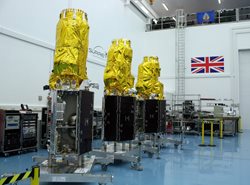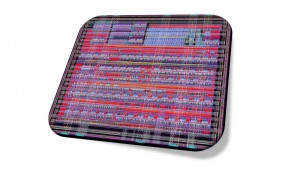 Japanese mobile operator NTT Docomo is to work with Intel and Qualcomm as part of its development of 5G research into mobile communications technologies.
Japanese mobile operator NTT Docomo is to work with Intel and Qualcomm as part of its development of 5G research into mobile communications technologies.
NTT Docomo has also signed up Panasonic and Rohde & Schwarz as part of the ongoing development of 5G mobile communications.
Last month, Keysight Technologies also said is was to work with Japan’s main mobile operator on 5G communication system development.
Like other mobile operators, NTT Docomo is working toward a commercial launch of 5G services in 2020. The goal is to provide an initial 5G deployment in time for the Tokyo 2020 Olympic Games.
But 5G technology development is still in its early stages.
Docomo has been working with Alcatel-Lucent, Ericsson, Fujitsu, Huawei, Mitsubishi Electric, NEC, Nokia and Samsung on 5G research for just over a year.
The first 5G standards are not expected to be confirmed before next year. Current work is focusing on the radio interface and the frequency band with the capacity to support the scale of data traffic 5G will bring.
NTT Docomo writes in a white paper on 5G technology development:
“5G, compared to 4G, needs to be more massive and scalable to enable a wider range of scenarios and services. In particular, the 5G radio access needs to provide significant performance gains in system capacity and user data rates. Specifically, it is necessary to meet the very challenging targets of 1000-fold system capacity per km and Gbit/s-order user-experienced data rate. This necessitates the pursuit of not a single but a set of directions of evolution for radio access technologies.”
NTT Docomo proposes two basic evolution paths that can be taken to support new system capabilities for 5G:
1) An evolutionary path focusing on further LTE enhancements.
2) A revolutionary path using a brand-new radio access technology that may include major changes that are non-backward compatible with LTE.
Docomo believes that LTE/LTE-Advanced, well-optimised for existing lower frequency bands, will continue to be improved in the future.
“LTE/LTE-Advanced could even be further enhanced to cover some of the 5G system capabilities, such as massive connectivity and reduced latency. However, the challenges of achieving significant gains in capacity and user-experienced data rate will require a significant leap in spectrum efficiency, spectrum extension, and network densification and LTE/LTE-Advanced and their enhancements alone are unlikely to accomplish,” says the NTT Docomo white paper.
“From spectrum utilization point of view, the spectrum below 3GHz is mostly utilised by existing systems. The utilization of higher frequency bands will enable higher data rates (maybe also lower latency) by using wider bandwidths. For higher frequency bands, e.g., beyond 10GHz, the current 4G system (LTE/LTE-Advanced radio interface) would not be an optimum solution because it has been optimised for the existing cellular bands, i.e., around 2GHz.
“Thus, the use of higher frequency bands requires a new radio access technology and therefore, Docomo considers 5G radio access as a combination of a new radio access technology specifically designed for higher frequency bands and LTE/LTE-Advanced enhancements.”
Lower power millimetre wave transmission in the 60GHz band is being considered for 5G because of the scarcity of spectrum resources below 6GHz, which leads to high interference levels, the public concern about microwave electromagnetic field (EMF) exposure in dense areas and the power consumption of the infrastructure.
Rohde & Schwarz has the SMW200A vector signal generator and the FSW85 spectrum analyser which cover the frequency range up to 85GHz in a single sweep without the need of external harmonic mixers. This is suitable for measurements in the millimeter-wave frequency band being investigated for 5G development.
Rohde & Schwarz is already a partner in the UK’s main 5G technology development project at the 5GIC on the University of Surrey campus.
Richard Wilson



